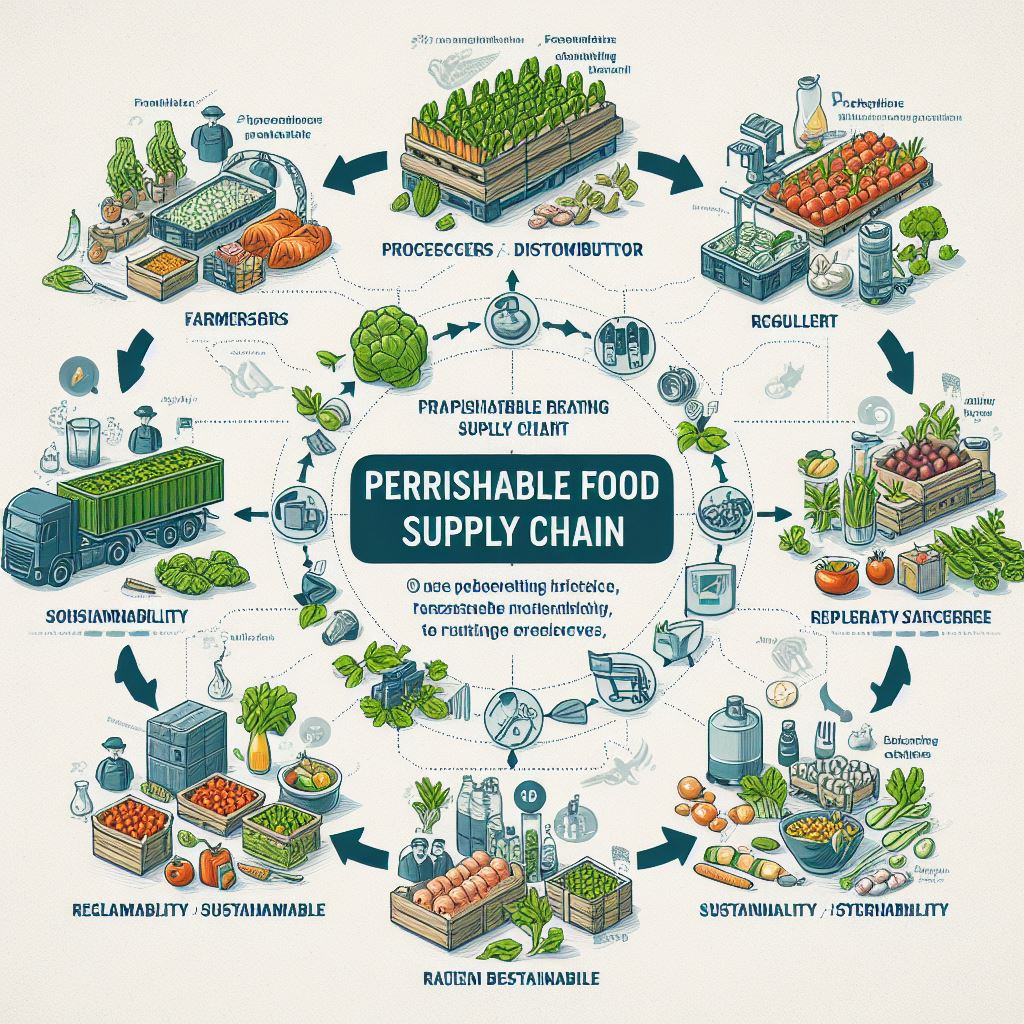Navigating Financial Challenges in The Perishable Food Supply Chain

The perishable food supply chain is a complex network intricately tied to nature’s rhythm, consumer demand’s fickleness, and the ever-changing global economic landscape. This combination often presents financial challenges that need careful navigation.
This discussion delves into these challenges, analyzing their roots and impacts within the supply chain and exploring possible strategies for mitigating their effects.
After reading today’s article, consider Silo’s payment and collections software here: https://usesilo.com/products/payments.
Contents
Fluctuating consumer demand
Consumer demand in the perishable food supply chain is highly volatile and influenced by a variety of factors, such as dietary trends, seasonal changes, and health scares. This fluctuation can significantly impact the financial stability of businesses within the chain.
Dietary trends
Trends like veganism, gluten-free diets, or low-carb lifestyles can dramatically shift consumer demand. When a new trend emerges, demand for specific perishable goods may surge, straining the supply chain. Conversely, if a product falls out of favor due to a trend, it can leave suppliers with excess stock that perishes before it can be sold, leading to financial loss.
Seasonal changes
The perishable food supply chain is intrinsically linked to the seasons. Changes in weather patterns can affect the availability of certain products, creating supply shortages and price hikes. Additionally, consumer preference for certain foods can vary by season, creating peaks and troughs of demand that businesses must anticipate and manage to maintain financial stability.
Health scares
Health scares, such as the outbreak of foodborne illnesses, can dramatically decrease demand for a specific food item overnight. This sudden drop can lead to significant financial losses for businesses that are heavily invested in the implicated product, as they may have to discard large quantities of stock and rebuild consumer trust.
Price volatility of raw materials
Price volatility of raw materials, particularly agricultural products, is another key financial challenge:
- Commodity market fluctuations: Prices of agricultural products can fluctuate due to changes in the global commodity markets. Geopolitical instability, changes in trade policies or fluctuations in foreign exchange rates may all affect raw material costs, making it harder for companies to predict expenses and manage budgets effectively.
- Climate change impacts: Changes in weather patterns due to climate change can result in crop failure, diminishing supplies of certain raw materials and driving up prices, which businesses must absorb at the cost of increased expenses that threaten to impact their profits negatively.
- Production costs: Production costs of agricultural products can fluctuate depending on factors like fuel and labor costs, technology changes and any related industry fluctuations. With rising production costs can come increased raw material prices which directly impact businesses within the perishable food supply chain.
Logistical challenges
The perishable food supply chain also faces significant logistical challenges that directly impact financial performance.
Transportation costs
Transporting perishable food items is a critical yet cost-intensive part of the supply chain. Items often require specialized vehicles for temperature control to maintain product quality during transit. Fluctuations in fuel prices, vehicle maintenance costs, insurance premiums, and the distances covered can all contribute to high transportation costs.
Spoilage
Perishable food items have a limited shelf-life and are prone to spoilage due to factors such as temperature fluctuations, improper handling, or delays in transportation. This can result in significant financial losses as these spoiled items cannot be sold and must be discarded.
Storage
Maintaining proper storage conditions for perishable foods, such as refrigeration or humidity control, involves considerable ongoing costs. Additionally, if storage capacity is not carefully managed, businesses may find themselves either with wasted space or, conversely, insufficient room at peak times.
Both scenarios carry financial implications — either in the form of underutilized resources or the need for costly last-minute solutions.
Inventory management
Efficient inventory management is crucial to minimize the risk of overstocking or understocking perishable items, both of which can lead to financial loss. Overstocking can result in more spoilage, while understocking can lead to lost sales opportunities.
Mitigation strategies
Mitigating financial risks in the perishable food supply chain involves multiple strategies, including, but not limited to.
Diversification
Businesses can diversify their product offerings and markets to spread financial risk. If one product or market underperforms, the business will still have other sources of revenue to fall back on. Diversification can also involve sourcing raw materials from a variety of suppliers to reduce the risk of supply shortages.
Investment in technology
Companies can invest in technologies that increase efficiency and reduce waste. For example, predictive analytics can help anticipate consumer demand, while supply chain management software can optimize inventory levels and reduce spoilage. Similarly, investment in cold chain technology can maintain the quality of perishable goods and minimize loss due to spoilage.
Risk management instruments
Businesses can use financial instruments such as futures contracts or insurance policies to manage the risk of price volatility in raw materials or to cover potential losses due to unforeseen events like natural disasters or health scares.
Sustainable practices
Adopting sustainable practices, like sourcing from local suppliers or reducing energy consumption, can not only reduce costs in the long term but also attract environmentally conscious consumers, thereby potentially increasing demand and revenue.
The perishable food supply chain is replete with financial challenges, from price volatility of raw materials to complex logistical issues. However, businesses can effectively mitigate these risks through strategic planning, investment in modern technologies, and adopting sustainable practices.
A comprehensive approach that combines diversification, risk management, regulatory compliance, and sustainability can ultimately enhance profitability and ensure the resilience of the perishable food supply chain in the face of potential disruptions.






